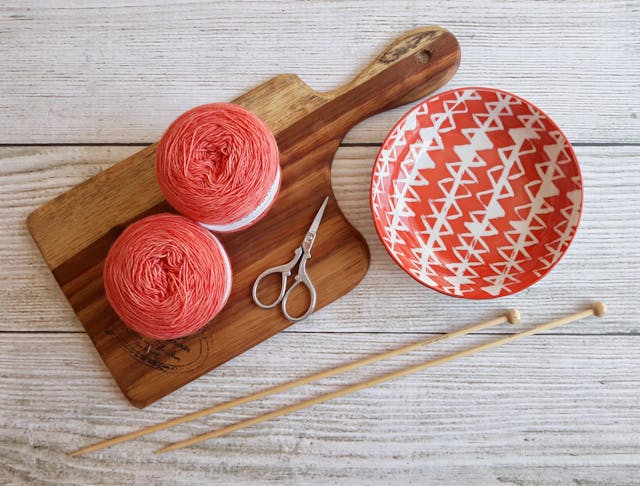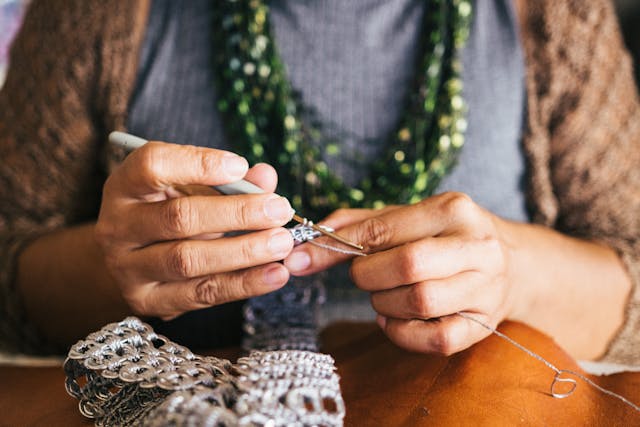Beginner's Guide to Knitting: Essential Tips and First Project Ideas
Knitting is a relaxing and rewarding hobby that allows you to create beautiful and functional items with your own hands. If you're new to knitting, you might feel a bit overwhelmed by the terminology, tools, and techniques. Don’t worry! With the right guidance, you’ll be stitching in no time. This beginner’s guide covers essential tips and easy project ideas to help you get started.

Why Start Knitting?
Knitting isn’t just about making scarves or sweaters; it’s a creative outlet with numerous benefits:
-
Stress Relief: The repetitive motions can be meditative and calming.
-
Skill-Building: You’ll learn focus, patience, and problem-solving.
-
Sustainability: Hand-knitted items are durable, customizable, and eco-friendly.
Knitting Essentials: What You Need
Before you start, gather these basic tools and materials:
1. Yarn
Choose a medium-weight yarn (labeled as “worsted weight”) for your first project. It’s easy to handle and widely available.
-
Material: Cotton or acrylic yarns are great for beginners—they don’t split easily and are budget-friendly.
-
Color: Pick a light or bright color so you can easily see your stitches.
2. Knitting Needles
Start with straight needles in a size 8 or 9 (US). These sizes work well with worsted weight yarn and are comfortable for beginners.
-
Material: Bamboo or wooden needles are less slippery than metal, making them easier to control.
3. Scissors and Tapestry Needle
-
Use scissors to cut your yarn.
-
A tapestry needle (with a blunt tip) is essential for weaving in loose ends.
4. Stitch Markers and Row Counters (Optional)
These tools can help you keep track of stitches and rows as your projects grow more complex.
Learning the Basics
Knitting requires only two foundational stitches:
1. The Knit Stitch
The knit stitch is the foundation of most knitting projects. Master this stitch first to build confidence.
2. The Purl Stitch
Once you’re comfortable with the knit stitch, learn the purl stitch. Together, these two stitches can create a wide variety of patterns.
Pro Tip: Watch video tutorials or join a beginner’s knitting class to see the techniques in action.
Reading a Pattern
Knitting patterns might seem like a foreign language at first. Here’s a quick breakdown:
-
CO: Cast On (the number of stitches to start with).
-
K: Knit.
-
P: Purl.
-
BO: Bind Off (how to finish your project).
-
Gauge: The number of stitches and rows per inch—important for sizing.
As a beginner, look for patterns marked "easy" or "beginner-friendly."

First Project Ideas
Start small and simple to build your skills. Here are some beginner-friendly projects:
1. Easy Garter Stitch Scarf
The garter stitch (knit every row) creates a soft and stretchy fabric.
-
What You’ll Need: Worsted weight yarn, size 8 needles.
-
Instructions:
-
Cast on 30 stitches.
-
Knit every row until the scarf reaches your desired length.
-
Bind off and weave in loose ends with a tapestry needle.
2. Cozy Dishcloth
Dishcloths are practical, quick to make, and a great way to practice knitting and purling.
-
What You’ll Need: Cotton yarn, size 8 needles.
-
Instructions:
-
Cast on 20 stitches.
-
Alternate rows of knit and purl stitches to create a textured pattern.
-
Bind off and weave in the ends.
3. Simple Headband
A headband is a stylish and functional accessory, perfect for practicing consistent tension.
-
What You’ll Need: Worsted weight yarn, size 9 needles.
-
Instructions:
-
Cast on 10–15 stitches (depending on desired width).
-
Knit every row until the piece is long enough to fit snugly around your head.
-
Bind off and sew the ends together to form a loop.
Troubleshooting Tips
-
Loose or Tight Stitches: Tension issues are common for beginners. Relax your hands and try to keep your stitches even.
-
Dropped Stitches: Use a crochet hook or your needle to pick them up and place them back on the needle.
-
Count Your Stitches: Regularly count your stitches to ensure you haven’t accidentally added or dropped any.
Staying Motivated
Knitting is a skill that takes practice, so be patient with yourself! Here are some ways to stay inspired:
-
Join a local knitting group or online community for support and inspiration.
-
Celebrate small victories, like mastering a new stitch or completing your first project.
-
Gradually challenge yourself with more complex patterns as your confidence grows.
Conclusion
Knitting is a journey of creativity, patience, and joy. With just a bit of practice, you’ll soon be crafting cozy scarves, thoughtful gifts, and even intricate garments. Start small, embrace the process, and enjoy the satisfaction of making something beautiful with your own hands!












